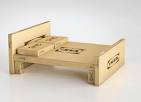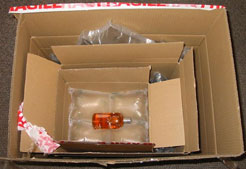Introduction
Tetra is a multinational food packaging and processing company of Swedish origin with head offices in Sweden and Switzerland. The company offers packaging solution, filling machines and processing solutions for dairy, beverages, cheese, ice cream and prepared food.
The History of Tetra Pak
Tetra Pak was founded 1943 by Dr. Ruben Rausing, a Swedish scientist. His idea was to produce a packaging that would save more money than it costs. Driven by that idea he developed a bag of milk with the form of a Tetra Eder. The reason for this shape was the production where foiled paper was formed into a tube and could be closed under the surface of the milk. This happened in a continual process because one machine formed the tube, filled the milk and sealed it. (TetraPak, Tetra Pak, 2014)

In 1963 the shape advanced to the standardized so called Brik packaging. This and the development of the ultra-high-temperature processing of milk led to the development of the first aseptic packaging firm by Tetra Pak. It was introduced in Switzerland (TetraPak, Tetra Pak Magazin 100, 2011).
In 1991, Tetra Pak expanded into liquid food processing equipement, plant engineering and chesse manufacturing equipment. Today, it is the only international company in the world able to provide intergrated processing, packaging, and distribution line and plant solutions for food manufacturing. This means that its customers enjoy the advantage of being able to get multiproduct solutions from single source, with matching equipment at every stage (TetraPak, Tetra Pak Magazin 100, 2011).
The Tetra Pak
The packaging of a Tetra Pak contains different layers. The layers are from the inside to the outside:
Polyethylene à Polyethylene à Aluminium à Polyethylene à Paperboard à Polyethylene
The Polyethylene prevents the package of not soaking through. So no liquid can get out or in the package. The Aluminum protects the liquid from light and oxygen. Without this barrier from oxygen the product would not be as long usable as it is right now. The UV-light protection of the content is important for saving the vitamins of the liquids. Especially is in danger of losing vitamins if exposed to light (TetraPak, Tetra Pak, 2014).

The way of the filling did not change big till today. Only the shapes and sizes of the packages expanded over the years and is offering the milk and juice companies many different ways of individualizing their packaging.
The aseptic innovation
By pasteurizing, for example milk, microorganisms will be destroyed. This is partly effective because of heat resistant spores. Only by multiple heat procedures those spores can be eliminated as well. Pasteurizing means a heating up of the liquid for a short amount of time. After this heating process the liquid will be cooled down again. By this process the nutrition value and the taste will stay the same.
To protect the liquid from outer influences like bacteria, the whole process has to happen in a sterile environment. Since the natural bacteria in milk is deactivated by pasteurisation and the Tetra Pak process meant that no air could get into the finished product, the only remaining source of bacteria is from the paper and machinery. Aseptic packaging is representing a process entirely free from micro-organisms. The packaging material is washed with disinfectant before it reaches the milk, then heat treated to vaporise any disinfectant residue, which creats a flow of hot sterile air during the filling process that prevented airborne bacteria from entering the packaging. And the high temperatures “flash pasteurised” the milk with the result that its taste is virtually indistinguishable from unpasteurised milk. Aseptic packaging was borne in 1961 as a result of the joint venture. The technology was improved still further with the addition of a layer of aluminium foil to the paper that made the package even more stable and able to exist for months without refrigeration without spoiling (Lüppens, 2006).
The Impact on the industry
The milk industry from dairy to store can be summarized as follows. A vast majority of the dairies were large concerns, servicing relatively large regional areas. They sourced the milk supply, contracted for bottles, sterilized the bottles, filled the bottles and distributed to the local retailers. They also held the collection process of used bottles and were able to secure their distribution of milk through control of the bottle collection process- it tied retailers and consumers to the dairy company (TetraPak, Tetra Pak, 2014).
The Tetra Pak packaging solution allowed Tetra to completely redefine the packaging value chain all the way from dairies to retailers and consumers by consolidating all the stages of the packaging processing. It was far more convenient for distributors and consumers because it didn’t break unlike its nearest competitor – the glass bottle. It also was able to offer competitively priced alternatives to glass and led to greater efficiencies in the dairy and retailing industries due to reduced
space and resources it consumed.























